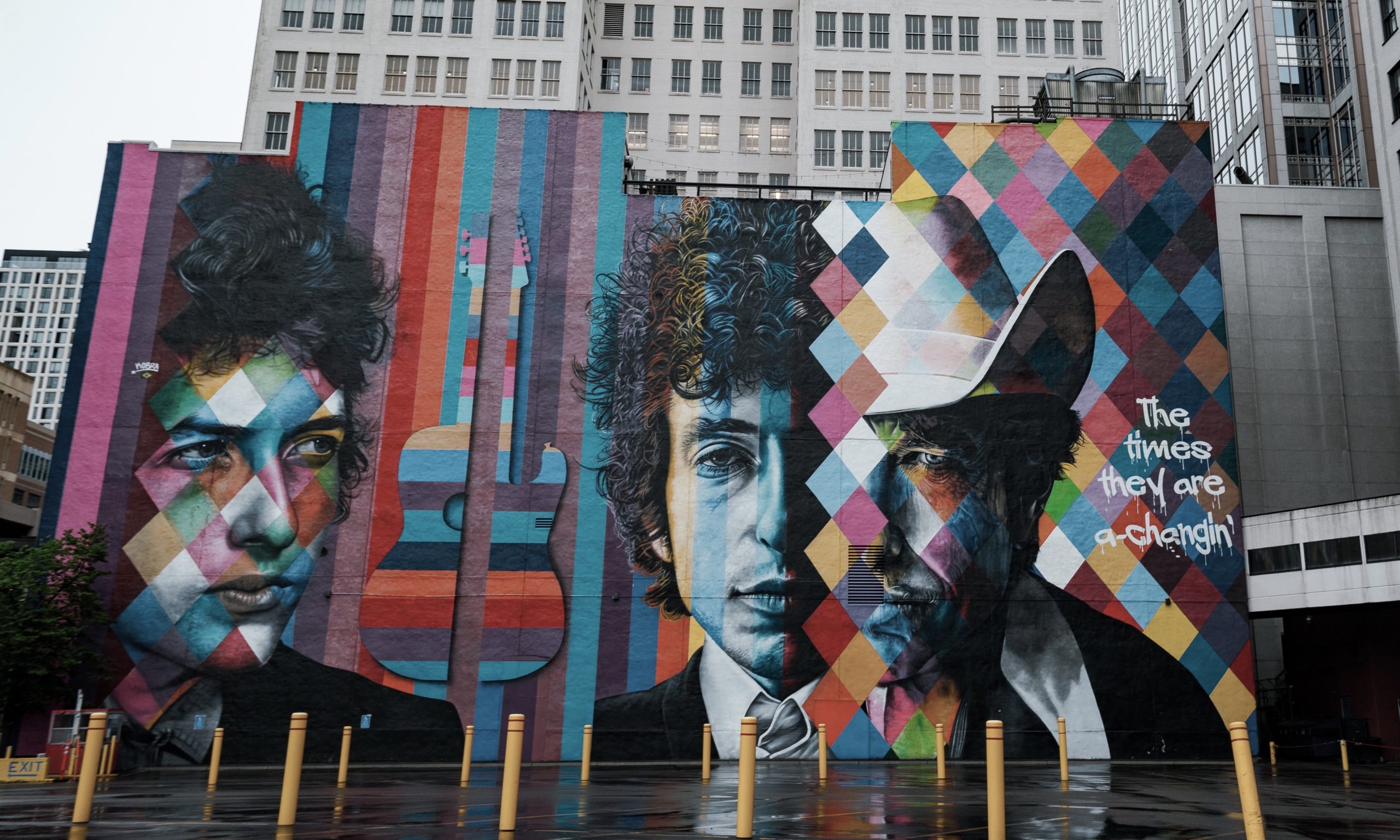
About the author : paulwesslundwriter
Paul Wesslund spent a career writing and editing for newspapers and in the energy industry. When he retired in 2015 he went on to write two books on how kindness and integrity leads to success, wrote a monthly energy column, became an environmental organizer, and got involved in the leadership of his church.
Subscribe To My Blog
Share This Story, Choose Your Platform!
Bob Dylan can sure irritate people in a lot of different ways.
I have a friend who hates his croaky voice so much the mention of his name brings an immediate end to any other conversation.
Another friend complained to me that Dylan really should have come up with a better answer than that it was “Blowin’ in the Wind.”
In 1965 he famously angered his rabid folk-music fans by hauling out and plugging in an electric guitar at the Newport Music Festival, to a smattering of booing from the audience.
He irritated me a few years ago by recording a Christmas album and a collection from the American songbook. I can overlook Dylan’s throat-full-of-gravel voice for the payoff of his perfectly passionate storytelling inflections. But I sure don’t want to hear him singing “Here Comes Santa Claus” or “As Time Goes By.” (Although I get it that one way Bob Dylan sees himself is as America’s troubadour, so I guess he had to check the boxes of releasing albums of holiday and classic popular standards.)
It’s just an album
In 1983 he shocked a music writer who couldn’t understand why Dylan recorded what I think of today as his best song, Blind Willie McTell, but didn’t include it on the album he was working on at the time. (The song would be released years later.) “Don’t get so excited,” Dylan told him. “It’s just an album. I’ve made 30 of them.”
I have a Bob Dylan recommendation for you whether you hate him, love him, or even if you don’t know or care much about him: listen to his latest album, Rough and Rowdy Ways.
It’s not his best album—and no I won’t venture an opinion on which is his best. But it shows in a satisfying way what the 79-year-old is up to these days, and it’s as deep and current as The Times They Are a Changin’ was when he released that song 56 years ago.
The songs on each Bob Dylan album tend to hang together as a mood or theme. My favorite trick to figuring out what he’s saying through his parable-like and seemingly stream-of-consciousness lyrics, is to just let them wash over you and pay attention to whatever they bring to your mind.

And the only way to do that is to pay attention to the words, with headphones, or on a long car trip, or sitting still with lights low. To steal a line from the Talking Heads, this ain’t no disco.
What I find in this album of his released last month is a meditation on the crazy tangle of people and society that at the moment is confounding us all.
The first song tees up that theme pretty clearly with the giveaway title, I Contain Multitudes. To a slow strum and in his weariest here-we-go-again voice he describes the complexity of any person, or all of us together, singing, “I paint landscapes, and I paint nudes/I contain multitudes.” Then he drives his point home with the unlikeliest of juxtapositions and unlikeliest of rhymes: “I’m just like Anne Frank, like Indiana Jones/And them British bad boys, The Rolling Stones.”
That starts a long, long list of pop culture references that walk through the album, connecting everything that’s been going on in these decades.
None of the songs carries that pop-culture refrain through more than Murder Most Foul, a 16-minute, 55-second contemplation of President Kennedy’s assassination. It’s surprisingly listenable for its length, as it ties together nearly every celebrity and news event we’ve ever heard about, making me think of the line from the Rolling Stones’ Sympathy for the Devil, where the Lucifer narrator belts, “I shouted out/Who killed the Kennedys?/When after all/It was you and me.”
The deep roots of slavery
But my favorite is My Own Version of You, an ominously plodding but rhythmic minor-key scary-sounding march about somebody searching for body parts to do what all of us are doing all the time: “I’ll bring someone to life, is what I wanna do/I wanna create my own version of you…I’ll bring someone to life, someone for real/Someone who feels the way that I feel.”
And in case you think he’s only singing about how we try to feel better by seeing ourselves in others, he expands the story to the Bob Dylan version of slavery’s part in all of human civilization:
Stand over there by the cypress tree
Where the Trojan women and children are sold into slavery
Long before the first Crusade
Way back ‘fore England or America were made
Step right into the burnin’ hell
Where some of the best-known enemies of mankind dwell
Mr. Freud with his dreams, Mr. Marx with his ax
See the rawhide lash rip the skin from their backs
The album’s messages stay pretty heady, but they stay interesting by skipping from social commentary to the kind of cockeyed love songs Dylan writes (“I’ve seen the sunrise, I’ve seen the dawn/I’ll lay down beside you when everyone’s gone”); to funky stomps; to a Dylanesque tribute to an old blues musician, Goodbye Jimmy Reed, with his trademark seemingly-objective observations that really mask social criticism:
You won’t amount to much, the people all said
‘Cause I didn’t play guitar behind my head
Never pandered, never acted proud
Never took off my shoes, throw ’em in the crowd
Verses like that show Dylan’s kept the puckishness he showed in 1965 during a news conference after the release of Like a Rolling Stone. Asked by a reviewer to describe himself, Dylan answered, “I’m just a song and dance man.” By 2001 Bob Dylan’s celebrity and cult status had grown to the point that there was no limit to online chatter about him. Among the internet critiques was that a lot of his songs were made up of pieces stolen from other songs. So he titled his next album, Love and Theft.
In 2016 there was a whole new wave of irritation when he received The Nobel Prize for literature. A folk singer winning one of literature’s top honors didn’t sit well with many. And then he broke protocol by not appearing in person to deliver an acceptance lecture. Instead, Patti Smith sang Dylan’s A Hard Rain’s A-Gonna Fall, at one point losing her place and having to start over. More criticism, but I found her slip and recovery sincere, human, and affecting.
A few months later, in his come-in-through-the-side-door style, he submitted a recorded acceptance speech that came with a cocktail-lounge piano playing in the background. In that video he makes his case for why his music can legitimately be considered literature, describing how he was influenced by Moby Dick, All Quiet on the Western Front, and The Odyssey. He concludes that discussion of literature and storytelling by quoting Homer: “Sing in me, oh Muse, and through me tell the story.”
On Rough and Rowdy Ways you can hear Bob Dylan as new, as old, and as quirky as he has always been. You can hear he’s still blowin’ in the wind.
Cover photo: Bob Dylan mural in downtown Minneapolis. Photo by Weston Mackinnon
